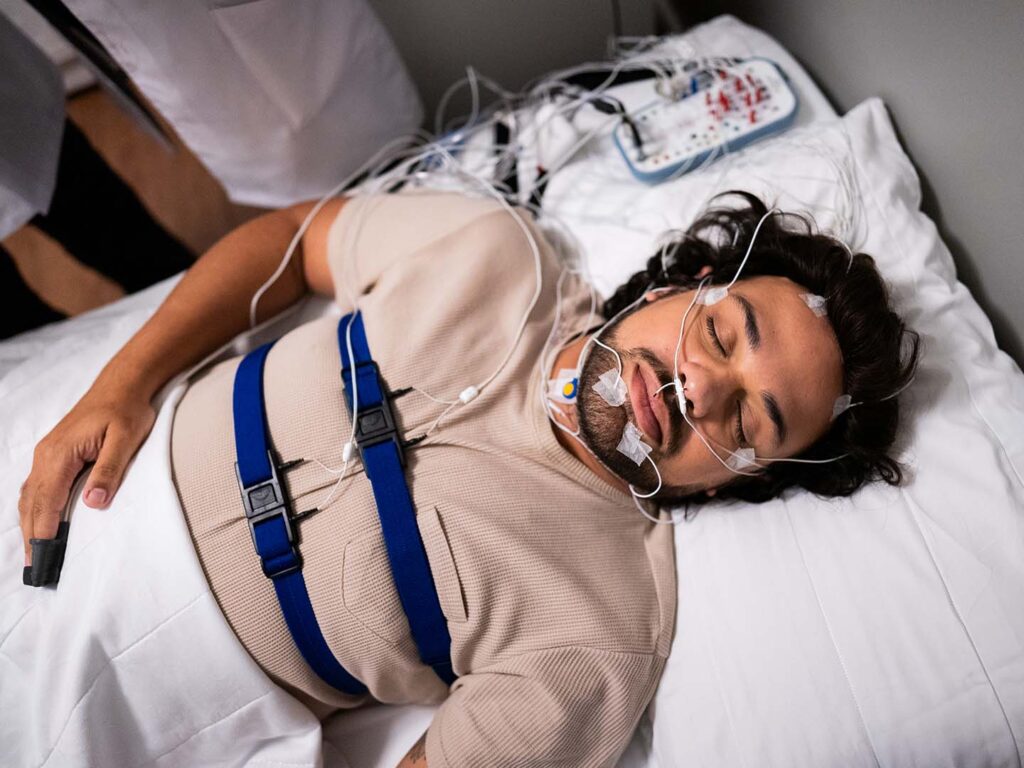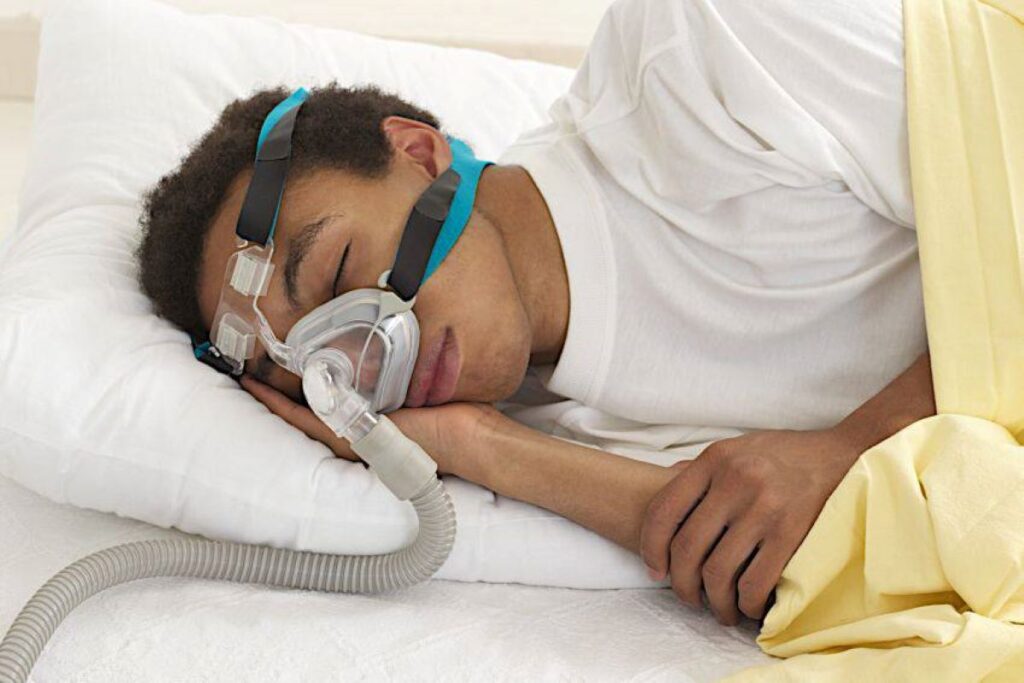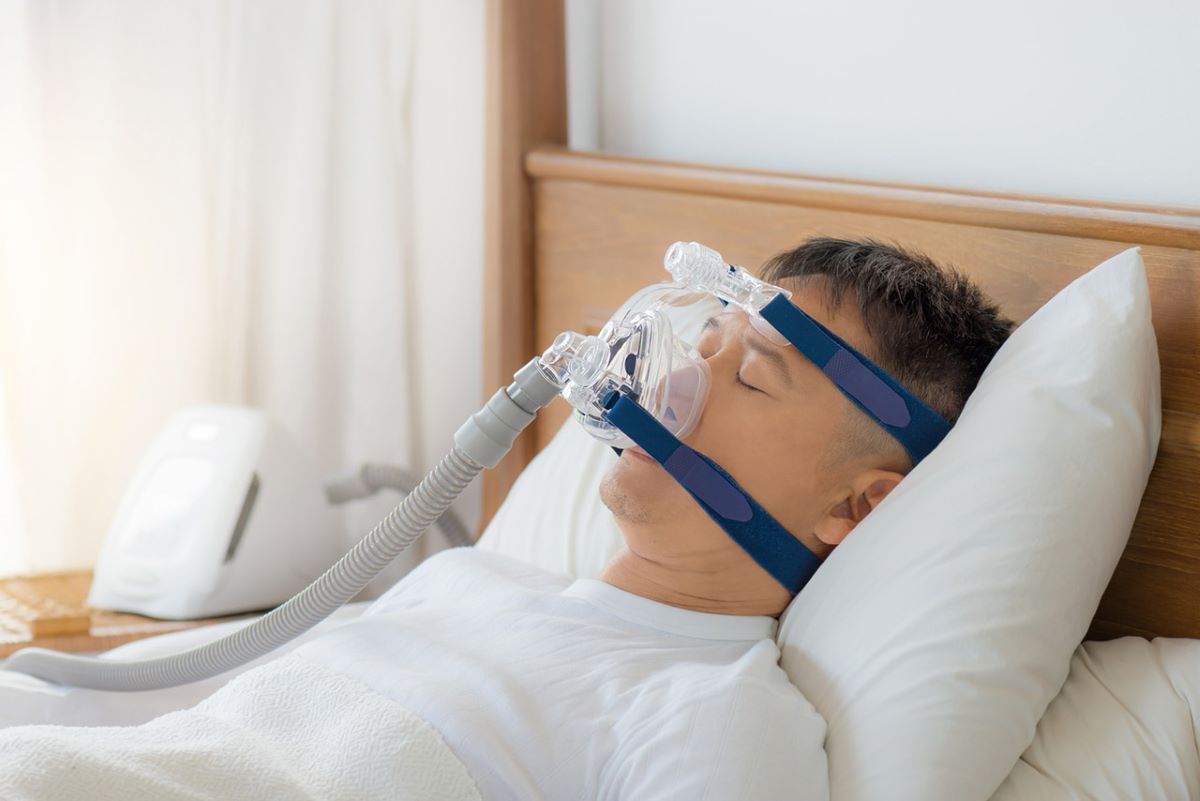What Is a Sleep Study and Why Is It Important for Diagnosing Sleep Disorders?
A sleep study, also known as polysomnography, is a comprehensive diagnostic test that monitors your body’s physiological activities whilst you sleep. This non-invasive procedure tracks everything from brain waves and heart rate to breathing patterns and oxygen levels, creating a detailed picture of your sleep quality.
Undiagnosed sleep disorders can significantly impact your daily life, leading to chronic fatigue, reduced concentration, cardiovascular problems, and diminished quality of life. Sleep study Ormeau services provide essential diagnostic tools that help identify conditions such as obstructive sleep apnea, insomnia, and sleep-related breathing disorders. Early detection through proper sleep disorders diagnosis enables healthcare providers to develop targeted treatment plans before complications arise.
Residents seeking a sleep study in Ormeau benefit from flexible testing options designed around their comfort and convenience:
- In-clinic studies: Conducted in a professional sleep laboratory with continuous monitoring
- At-home portable monitoring: Take equipment home for overnight recording in your own bed
- Bulk-billed options: Available for eligible patients to minimise out-of-pocket expenses
The portable monitoring option has become increasingly popular, allowing patients to undergo testing in familiar surroundings whilst still capturing the comprehensive data independent sleep physicians need for accurate diagnosis. This accessibility ensures more people can address their sleep concerns without the stress of unfamiliar environments.
How Are Patients Referred for a Sleep Study in Ormeau and What Happens Next?
The sleep study referral Ormeau process begins when your general practitioner or specialist submits a referral to the sleep clinic. The clinic’s administrative team receives these referrals through various channels—fax, email, or electronic health record systems—and processes them according to urgency and availability.
Once your referral enters the system, the clinic team reviews your medical information and determines the most appropriate testing approach for your situation. This initial assessment considers factors such as your symptoms, medical history, and any specific concerns noted by your referring doctor.
Appointment confirmation typically occurs within a few business days of receiving your referral. A staff member will contact you directly via phone or email to:
- Confirm your personal details and contact information
- Schedule a convenient appointment time for your initial consultation
- Provide preliminary instructions about what to expect
- Answer any immediate questions you may have about the process
The clinic aims to make this appointment confirmation process straightforward and accommodating to your schedule. They understand that sleep issues affect your daily life, so they work to arrange appointments promptly. During this initial contact, you’ll receive clear directions to the clinic location and information about parking facilities, making your first visit as stress-free as possible.
What Preparation Steps Are Taken at the Sleep Clinic for Patients Undergoing a Sleep Study?
Sleep study preparation begins with a comprehensive clinic appointment where staff guide you through the entire process. You’ll complete a detailed medical questionnaire covering your sleep history, current symptoms, medications, and relevant health conditions. This information helps sleep physicians interpret your results accurately and identify potential factors affecting your sleep quality.
The clinic team provides hands-on training with the portable monitoring equipment during this appointment. You’ll receive step-by-step instructions on:
- How to position each sensor correctly on your body
- When to switch the device on before sleep
- What to do if a sensor becomes loose during the night
- How to remove the equipment safely in the morning
Staff demonstrate the proper placement of each component, including chest bands for breathing effort, finger probes for oxygen levels, and nasal cannulas for airflow detection. You’ll have the opportunity to ask questions and practice fitting the sensors yourself under supervision.
The portable devices are designed for user-friendly operation at home, eliminating the need for an overnight stay in an unfamiliar clinic environment. You’ll leave the appointment with the equipment, written instructions, and contact details should you need assistance during your recording night.
What Key Physiological Parameters Does the Portable Sleep Study Equipment Monitor?
The portable sleep study equipment tracks multiple physiological parameters simultaneously to provide a comprehensive picture of your sleep health. These measurements work together to identify patterns and disruptions that may indicate sleep disorders.
1. Brain Activity Monitoring
Brain activity monitoring captures your sleep stages and cycles throughout the night, revealing how much time you spend in light sleep, deep sleep, and REM sleep. This data helps clinicians understand whether you’re achieving restorative sleep or experiencing frequent awakenings.
2. Cardiac Activity
Cardiac activity refers to heart rate and rhythm patterns that may indicate stress responses or breathing-related events. By analysing this data, healthcare professionals can gain insights into how your heart functions during sleep and whether any abnormalities are present.
3. Breathing Patterns and Effort
The equipment records breathing patterns and effort, which includes measuring airflow through your nose and mouth as well as chest and abdominal movement. These parameters are crucial for detecting any irregularities in your breathing patterns while you sleep.
4. Oxygen Saturation
Oxygen saturation is another critical parameter being monitored by the portable sleep study equipment. It measures blood oxygen levels that can drop during episodes of apnea (temporary cessation of breathing). This information is vital for understanding the impact of such events on your overall health.
5. Body Position
Your body position throughout the night is also recorded by the equipment. This aspect is significant because certain sleep disorders may worsen when you lie in specific positions. Understanding how body positioning affects your sleep can help tailor treatment approaches accordingly.
Each sensor plays a specific role in building a complete physiological profile:
- The breathing sensors detect pauses or reductions in airflow
- The oxygen monitor measures how these events affect your blood oxygen levels
- The cardiac monitor tracks your heart’s response to these breathing disruptions
- Brain activity monitoring confirms whether these events fragment your sleep architecture
This multi-parameter approach ensures that sleep physicians have detailed data to accurately diagnose conditions affecting your sleep quality.

How Should Patients Prepare for Their Sleep Study Night at Home?
Stick to your normal evening routine as closely as possible. The clinic needs to capture your typical sleep patterns, so maintaining your usual habits—including regular meals, beverages, and medication schedules—provides the most accurate diagnostic data. Any significant changes to your routine could alter your sleep behaviour and affect the study results.
Your sleep study night preparation should mirror an ordinary evening:
- Eat your regular dinner at the usual time
- Consume your normal beverages, including tea or coffee if that’s your habit
- Take all prescribed medications unless your doctor has specifically advised otherwise
- Avoid introducing new foods, drinks, or activities that might disrupt your typical sleep pattern
The clinic staff will provide specific instructions during your appointment about applying the sensors to your body. Follow these evening routine guidelines carefully to ensure proper data collection throughout the night. You’ll attach the monitoring equipment just before bedtime, positioning each sensor according to the demonstration you received.
Avoid alcohol or sedatives unless prescribed, as these substances can significantly alter your breathing patterns and sleep architecture. Creating an environment that reflects your normal sleeping conditions—same bedtime, same bedroom setup, same pre-sleep activities—helps the sleep physicians obtain meaningful data about your genuine sleep disorder symptoms.
See Also : Sleep Testing in Newstead: What Data Does It Collect While You Sleep?
What Happens During the At-Home Overnight Recording Phase of a Sleep Study?
The portable device continuously monitors and records your sleep data from the moment you switch it on until you wake in the morning. Once you’ve attached all sensors as instructed by the clinic staff, you simply go to sleep as you normally would in your own bed.
How Does an At-Home Sleep Study Work?
Throughout the night, the at-home sleep study process captures multiple data streams simultaneously without requiring any intervention from you. The equipment works silently in the background, tracking:
- Brain wave patterns to identify different sleep stages
- Heart rate and cardiac rhythm variations
- Breathing frequency, pauses, and effort levels
- Blood oxygen saturation percentages
- Body position changes during sleep
- Chest and abdominal movement patterns
What Happens During an At-Home Sleep Study?
The overnight recording procedure runs automatically, storing all information securely within the device’s memory. You won’t need to adjust settings or press any buttons during the night. The sensors remain in place through your natural sleep movements, though some shifting is normal and expected.
Most patients find they sleep reasonably well despite wearing the monitoring equipment. The portable nature of these devices means you can move freely in bed, use the bathroom if needed, and maintain your typical sleeping position. Upon waking, you’ll remove the sensors and prepare the equipment for return to the clinic, where specialists will analyse the comprehensive data collected during your sleep.
How Is the Equipment Returned After a Sleep Study and How Is the Data Analyzed for Diagnosis?
Returning sleep study equipment in Ormeau follows a straightforward process. After your overnight recording, you’ll remove the sensors in the morning and pack everything back into the provided case or bag. The clinic will have given you specific instructions during your initial appointment about when and where to return the equipment—typically within 24 hours of completing your study.
Most Ormeau sleep clinics offer flexible return options:
- Drop-off during business hours at the clinic reception
- Courier collection services arranged by the clinic
- Postal return using pre-paid packaging (if provided)
The data analysis process for sleep studies begins immediately after equipment return. Trained sleep technologists download the recorded data from the monitoring devices, checking for technical quality and completeness. This raw data—including your brain waves, breathing patterns, oxygen levels, and heart activity—is then reviewed by independent sleep physicians who specialize in sleep medicine.
These specialists examine the data for abnormalities such as breathing interruptions, oxygen desaturation events, irregular heart rhythms, or disrupted sleep architecture. The analysis typically takes 7-14 days, depending on clinic workload. Your referring doctor receives a comprehensive report detailing any diagnosed conditions, their severity, and recommended treatment options. The clinic may contact you directly to schedule a follow-up appointment to discuss findings and next steps.
For those unfamiliar with what to expect during a sleep study, it’s worth noting that there are several aspects that can help ease any concerns or anxieties about the process.
What Are the Benefits of Choosing a Local Sleep Study in Ormeau?
Choosing a local sleep study in Ormeau provides convenient access to diagnostic services without the need to travel to larger cities. Patients benefit from both in-clinic and at-home testing options, allowing them to select the environment where they feel most comfortable sleeping.
The benefits of local sleep studies Ormeau residents experience include:
- Reduced travel stress – No lengthy commutes to distant sleep centres means less disruption to your daily schedule
- Familiar surroundings – At-home testing allows you to sleep in your own bed, which often produces more accurate results than unfamiliar clinic environments
- Personalised local care – Face-to-face consultations with clinic staff who understand the community’s needs
- Flexible appointment scheduling – Local clinics typically offer more convenient appointment times to accommodate work and family commitments
Many Ormeau sleep clinics offer bulk-billed sleep studies for eligible patients with valid Medicare cards and GP referrals. This significantly reduces out-of-pocket expenses, making diagnostic testing more accessible to those who need it. The bulk-billing option removes financial barriers that might otherwise prevent individuals from seeking help for potentially serious sleep disorders.
The combination of location convenience, testing flexibility, and affordable pricing makes local sleep studies an attractive option for residents experiencing sleep-related concerns. Patients receive the same comprehensive diagnostic data and expert analysis available at metropolitan centres whilst enjoying the comfort and accessibility of their local community.

How Does a Sleep Study Help Diagnose Common Sleep Disorders Like Obstructive Sleep Apnea, Snoring, and Insomnia?
Diagnosing sleep apnea Ormeau relies on comprehensive physiological data collected during your overnight recording. The equipment captures breathing interruptions, oxygen desaturation events, and respiratory effort—key indicators that distinguish obstructive sleep apnea from simple snoring.
Independent sleep physicians analyse multiple data streams simultaneously to identify patterns:
- Brain activity recordings reveal sleep stage disruptions and arousal patterns characteristic of sleep apnea and insomnia
- Cardiac monitoring detects heart rate variations linked to breathing disturbances
- Oxygen saturation levels show drops that occur when airways become blocked
- Body position data helps determine if sleep disorders worsen in specific sleeping positions
The snoring diagnosis process examines breathing sounds alongside airflow measurements. Whilst snoring alone may seem harmless, the data can reveal whether it’s accompanied by dangerous breathing pauses or reduced oxygen levels requiring treatment.
For insomnia diagnosis, sleep physicians review how long you take to fall asleep, how often you wake during the night, and your total sleep time. Brain wave patterns indicate whether you’re achieving restorative deep sleep or experiencing fragmented, poor-quality rest.
This multi-parameter approach creates a complete picture of your sleep health, allowing physicians to differentiate between conditions that may present similar symptoms but require vastly different treatment approaches.
Conclusion
Knowing what to expect during a sleep study in Ormeau helps you feel more confident about the process. From getting your referral to returning the equipment, every step has been designed with your comfort and convenience in mind.
Your active involvement is crucial. By following the clinic’s instructions carefully, you ensure that the data collected accurately represents your usual sleep patterns. This means:
- Applying sensors exactly as shown
- Sticking to your normal evening routine
- Returning equipment on time for analysis
The quality of your results depends on how well you follow these guidelines. Accurate data allows sleep doctors to identify conditions like obstructive sleep apnoea, chronic snoring, or insomnia precisely, leading to targeted treatment plans that genuinely enhance your quality of life.
Ready to take charge of your sleep health? Get in touch with your local Ormeau sleep clinic today to discuss referral options and start your journey towards better, more restorative sleep. This simple first step will set you on the path to diagnosis and effective treatment.
FAQs About Sleep Studies in Ormeau
A sleep study, or polysomnography, monitors your brain, heart, breathing, and oxygen levels during sleep to diagnose disorders like sleep apnea, insomnia, and other sleep-related conditions.
2. How can I get referred for a sleep study in Ormeau?
You need a referral from your GP or specialist, which the clinic processes to schedule an appointment and determine the best testing method for you.
3. What preparations are required before a sleep study?
Patients complete a medical questionnaire, receive guidance on sensor placement, and learn how to operate the portable monitoring equipment for accurate data collection.
4. What physiological parameters does the sleep study monitor?
The study tracks brain activity, heart rate, breathing patterns, oxygen levels, and body position to provide a complete view of your sleep health.
5. How should I prepare for an at-home sleep study night?
Maintain your normal evening routine, eat as usual, take medications, avoid alcohol or sedatives unless prescribed, and follow instructions for sensor placement.
6. What happens during the at-home overnight recording?
The portable device monitors all relevant sleep data automatically while you sleep, allowing natural movements and positions without interruption.
7. How is the sleep study equipment returned and analyzed?
After use, equipment is returned to the clinic via drop-off, courier, or post. Specialists then review the data for sleep disruptions and provide a detailed diagnostic report.
8. What are the benefits of choosing a local sleep study in Ormeau?
Local testing offers convenience, familiar surroundings for accurate results, flexible scheduling, personalized care, and bulk-billed options to reduce costs.
9. How does a sleep study diagnose disorders like sleep apnea, snoring, and insomnia?
It analyzes multiple data streams—brain waves, heart rate, oxygen levels, breathing, and body position—to identify patterns specific to each condition for precise diagnosis and treatment planning.
